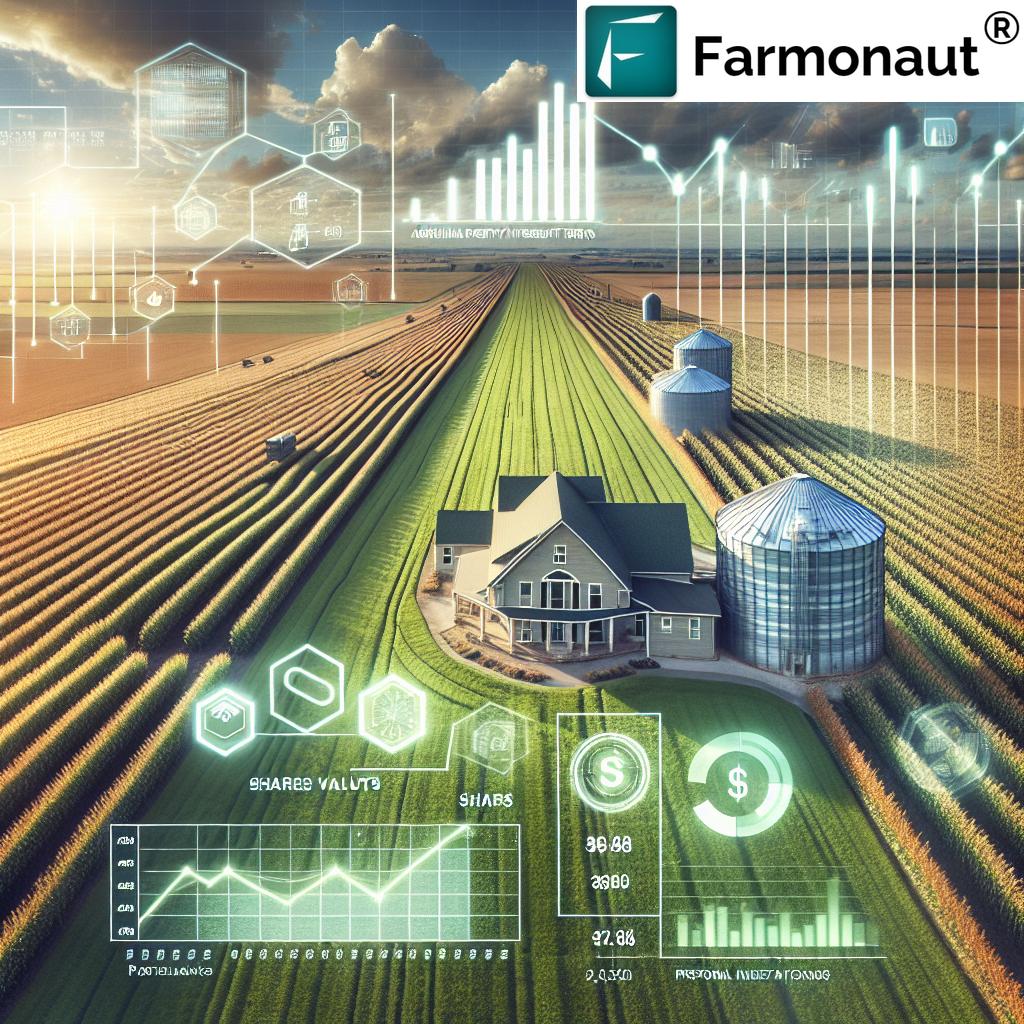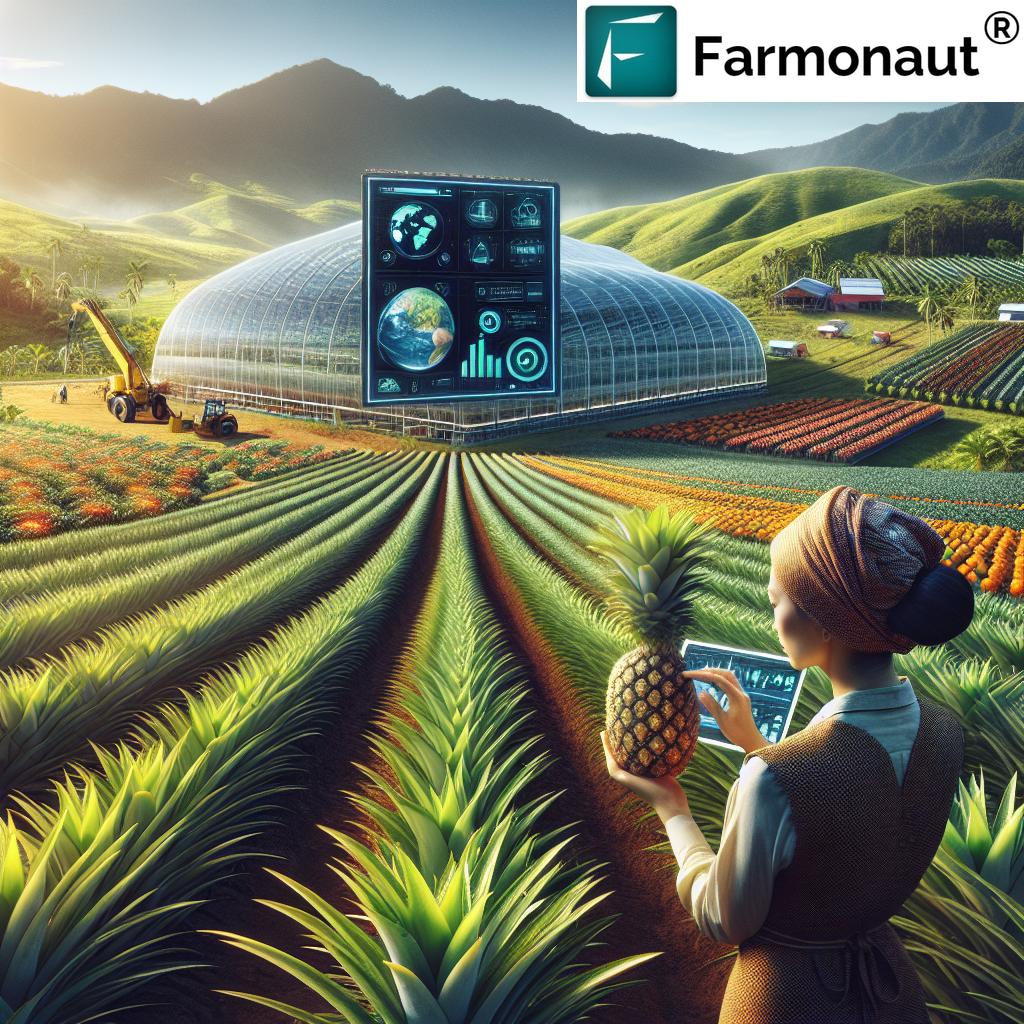Bugs That Infest Plants: Top 7 Pest Control Innovations
“Over 70% of 2025’s pest control innovations target bugs infesting plants using data-driven technologies and biological solutions.”
Table of Contents
- Summary: Understanding and Managing Plant-Infesting Bugs in Agriculture
- Types of Bugs That Infest Plants and Their Impact
- Challenges in Pest Management: 2025 Landscape
- Integrated Pest Management (IPM) and Sustainable Agricultural Practices
- Top 7 Pest Control Innovations in 2025
- Comparison Table of Top 7 Pest Control Innovations
- Farmonaut’s Role in Future-Ready Pest Management
- Conclusion: The Future of Managing Bugs That Infest Plants
- FAQ: Bugs That Infest Plants & Pest Management
Summary: Understanding and Managing Plant-Infesting Bugs in Agriculture—Challenges and Innovations in 2025
In 2025, the agricultural sector continues to grapple with the pervasive problem of bugs that infest plants. This ongoing problem is a significant threat to crop yields, food security, and farmer livelihoods worldwide. Ranging from aphids and whiteflies to caterpillars and beetles, these pests cause extensive damage to plant tissues by feeding and transmitting diseases. The impact on production, quality, and quantity of agricultural produce is profound.
Addressing plant infestations effectively in this ever-evolving environment requires a comprehensive understanding of pest biology, integrated pest management strategies, and an embrace of emerging technological innovations. Sustainable agriculture in 2025 hinges on the deployment of these advanced solutions to ensure resilient, productive farms.
Types of Bugs That Infest Plants and Their Impact
The Diversity of Pests Infesting Plants
Bugs that attack crops are incredibly diverse, including both sucking and chewing types.
- Sucking pests: Aphids, thrips, leafhoppers, and whiteflies drain sap, weakening plants and lowering photosynthetic capacity. This causes stunted growth and malformed leaves and fruits.
- Chewing pests: Caterpillars, beetles, and grasshoppers cause direct tissue damage that translates to reduced yields and quality.
- Vectors of disease: Many of these pests act as vectors, transmitting plant viruses leading to widespread epidemics that are difficult to manage with conventional means.
Regionally Significant Impacts and Key Examples
- Fall armyworm (Spodoptera frugiperda):
- Major threat to maize production in Africa and Asia
- Expands rapidly, causing billions in economic losses annually
- Whiteflies (Bemisia tabaci):
- Challenges tomato and cotton farmers globally
- Transmits plant viruses leading to reduced yield and quality
- Aphids, Grasshoppers, Beetles, Thrips, and Leafhoppers:
- Variety of crops affected: vegetables, grains, fruits, and cash crops.
- Widespread outbreaks often linked to changing climates and environmental conditions
The damage caused by bugs that infest plants is twofold:
- Direct damage: Stunting, leaf/fruit deformation, reduced photosynthetic capacity, and lower yields.
- Disease transmission: Acting as vectors of viruses, leading to widespread epidemics.
Annually, overall economic losses due to pest infestations can reach billions, impacting food security and farmer resilience.
Challenges in Pest Management: 2025 Landscape
Growing Limitations of Traditional Approaches
- Chemical pesticides, once considered a panacea, have led to rapid resistance development in pest populations. Pests like whiteflies, aphids, and caterpillars evolve quickly, rendering many conventional chemicals ineffective.
- Environmental pollution: Chemical inputs often contaminate soil and water, harm non-target species, and disrupt ecological balance.
- Food safety concerns: Growing consumer demand for residue-free food has led to increased regulatory restrictions worldwide.
- Access and affordability: Smallholder farmers, especially those in Africa and Asia, often struggle to access safe and affordable pest management inputs.
Climate Change and Evolving Pest Dynamics
Climate change continues to alter the biological and geographical range of bugs that infest plants:
- Warmer temperatures support faster pest lifecycles and higher populations
- Unpredictable weather creates unforeseen outbreaks, increasing the need for rapid and targeted interventions
- Extended seasons result in multiple generations of pests per year, compounding damage.
These multifaceted challenges demand innovations that go beyond traditional means, integrating technology and sustainability across agricultural practices.
“Integrated Pest Management adoption is projected to reduce synthetic pesticide use by up to 40% in sustainable agriculture by 2025.”
Integrated Pest Management (IPM) and Sustainable Agricultural Practices
Integrated Pest Management (IPM) is at the forefront of sustainable pest management in 2025, combining multiple strategies for long-term, environmentally conscious control.
-
Biological control agents:
- Deployment of natural enemies like lady beetles, parasitic wasps, and entomopathogenic fungi to suppress pest populations
-
Cultural and mechanical practices:
- Crop rotation and intercropping to interrupt pest life cycles
- Resistant crop varieties and proper field sanitation
-
Judicious pesticide use:
- Applying chemical controls only when necessary and in a targeted manner to avoid resistance and environmental damage
-
Remote sensing and precision agriculture:
- Utilizing satellites, drones, and smart sensors for real-time monitoring of pest infestations and pest populations
- Targeted interventions reduce waste, inputs, and environmental impact
Through these integrated practices and technologies, IPM supports higher yields, resource efficiency, and safer food while balancing productivity with ecological responsibility.
Farmonaut Platform for Crop Monitoring:
Satellite-based services—like our Farmonaut remote sensing platform—equip farmers and stakeholders to monitor crop health, track pest outbreaks, and integrate precision IPM strategies with actionable data.
Explore our large-scale farm management tools for agricultural decision-makers to streamline pest monitoring and interventions.
API Integration for Developers: Integrate real-time satellite monitoring and crop health data into your agricultural digital solutions.
Farmonaut API
|
Developer Docs
Top 7 Pest Control Innovations Transforming Management of Bugs That Infest Plants in 2025
As the challenges of managing bugs that infest plants persist, 2025 sees a dramatic shift towards innovations that incorporate technology, biology, and sustainable design. Below, we explore the seven most effective and promising pest management innovations reshaping global agriculture.
-
1. AI-Powered Remote Sensing and Digital Pest Monitoring
Advanced use of satellite imagery, drones, and AI-driven diagnostics enables farmers to detect infestations early, monitor populations, and deploy interventions only when needed. Machine learning recognizes pest patterns, facilitating timely decisions that minimize overuse of chemical controls.
- Real-time satellite crop surveillance for hotspot mapping
- Smart traps with pest identification capabilities
- Integration with mobile and web platforms like Farmonaut for remote management
-
2. Biopesticides and Bio-Rational Products
Derived from natural organisms (bacteria, fungi, plant extracts), biopesticides are highly selective, targeting only the bugs that infest plants and minimizing collateral harm. Their adoption is soaring as regulations tighten on synthetic chemicals. Benefits include:
- Reduced risk of resistance in pest populations
- Low residue—safe for beneficial species, pollinators, and human health
- Sustainability in production and application
-
3. Gene-Edited Pest-Resistant Crop Varieties
Harnessing gene editing (e.g., CRISPR), scientists develop plant varieties with innate resistance to regionally significant pests like fall armyworm, whiteflies, and aphids. These crops:
- Offer passive, long-term protection with fewer pesticide applications
- Reduce production losses due to attack and disease transmission
- Support higher yields and improved food security
-
4. Classical and Augmentative Biological Control
The commercial rearing and strategic release of beneficial organisms—parasitic wasps, predatory beetles, entomopathogenic nematodes, and microbial agents—help suppress pest outbreaks while preserving local biodiversity. Examples include:
- Lady beetles for aphid control
- Trichogramma wasps for caterpillar suppression on maize and tomato
- Fungal pathogens targeting soft-bodied pests
-
5. Blockchain-Enabled Traceability for Pest Management Inputs
Blockchain ensures transparency, authenticity, and safe use of pest control inputs (biopesticides, organic amendments). Traceability helps farmers and buyers verify that produce is grown sustainably and with responsible input sourcing. Core benefits:
- Reduces risk of counterfeit products in the supply chain
- Builds consumer and market trust in food quality and safety
- Boosts compliance with new regulatory standards
-
6. Automated Resource and Fleet Management Systems
Automating equipment and labor deployment for pest control operations cuts costs and improves efficacy on large farms. GPS and satellite tracking, combined with analytics, optimize the timing and location of sprayers, drones, or beneficial insect releases.
- Prevents over-application and minimizes wastage of inputs
- Reduces operational costs and safety risks
- Enhances rapid response during peak outbreaks
-
7. Decision Support Systems with Predictive Analytics
Platforms leveraging big data, AI, and advanced weather modeling empower farmers with predictive insights—anticipating infestations before outbreaks peak. These DSS combine:
- Historical pest pressure data
- Climate, crop, and phenological records
- Real-time field observations from IoT and satellites
Comparison Table: Top 7 Pest Control Innovations for Bugs That Infest Plants (2025)
| Innovation | Technology Type | Target Pest(s) | Estimated Effectiveness (%) | Estimated Cost Reduction (%) | Environmental Impact Level | Sustainability Score (1-5) |
|---|---|---|---|---|---|---|
| AI Remote Sensing & Digital Monitoring | Digital/AI/Remote | All major pests (aphids, armyworm, beetles, thrips, whiteflies) | 85-95% | 40-55% | Low | 5 |
| Biopesticides & Biorational Products | Biological/Chemical | Chewing & sucking pests (aphids, thrips, whiteflies, caterpillars) | 65-80% | 20-35% | Low | 5 |
| Gene-Edited Pest-Resistant Crops | Biotechnological | Region-specific pests (armyworm, whiteflies, beetles) | 70-88% | 30-45% | Medium | 4 |
| Biological Control Agents | Ecological/Biological | Aphids, caterpillars, leafhoppers, mites | 60-80% | 20-30% | Low | 5 |
| Blockchain Traceability | Digital/Blockchain | Pest management inputs (ensure authentic use against all pests) | 60-75% | 20-25% | Low | 5 |
| Automated Fleet Management | Digital/IoT/Automation | All mapped pest applications (broad-use) | 60-70% | 25-35% | Medium | 4 |
| AI Decision Support Systems | Digital/AI/Data | Predicting all major pest threats | 80-92% | 30-40% | Low | 5 |
Farmonaut’s Role: Satellite-Driven Innovation for Bugs That Infest Plants
At Farmonaut, we believe in making data-driven, satellite-powered tools accessible and affordable for all farmers and industry stakeholders. Our core technologies empower agricultural operations to predict, monitor, and manage pest infestations efficiently:
- Satellite-Based Monitoring: Harnesses multispectral imaging to monitor crop health, identify damage hotspots, and track evolving pest populations. This supports proactive management strategies and reducing unnecessary input use.
- AI-Powered Advisory: Jeevn AI synthesizes satellite data, weather, and historical pest pressure to issue customized pest risk forecasts and suggest optimal intervention timing.
- Blockchain Traceability: Ensures only certified and safe pest management inputs enter your agricultural supply chain, building transparency and trust with buyers and regulators.
- Resource Management: Fleet and logistics modules help large farms and cooperatives optimize the deployment of pest management personnel and machinery, lowering costs and increasing safety.
-
Environmental Impact Monitoring: Allows farmers and producers to quantify and report their reduction in carbon footprint from responsible pest control—essential for sustainable agriculture and future compliance.
Discover carbon footprinting tools for your integrated pest management programs.
Our mobile and browser platforms, along with API support (Farmonaut API), bring advanced pest control innovations within reach for organizations large and small.
Affordable Farmonaut Subscriptions for Every Scale
Conclusion: The Future of Managing Bugs That Infest Plants
The challenge of bugs that infest plants is likely to remain a central concern in global agriculture as we move further into and beyond 2025. Effective pest management is increasingly defined by an ability to synthesize traditional knowledge with technological innovations. Strategies such as IPM, AI-powered surveillance, biotechnology, and blockchain traceability set the new gold standard for sustainable control.
Empowering farmers and decision-makers with access to real-time data, predictive analytics, and safe inputs is key to safeguarding crop health, food security, and ecological balance. The integration of these solutions will bolster our ability to adapt to emerging threats and ensure the productivity and sustainability of agricultural systems worldwide.
FAQ: Bugs That Infest Plants & Pest Management Innovations in 2025
What are the most damaging bugs that infest plants globally?
Key bugs include aphids, whiteflies, caterpillars (like fall armyworm), beetles, thrips, and leafhoppers. These pests attack a wide variety of crops, causing both direct feeding damage and virus transmission, leading to lower yields and quality.
Why is integrated pest management (IPM) important in 2025?
IPM balances chemical, biological, and cultural practices to minimize pest risks while reducing environmental and health impacts. IPM helps prevent pest resistance and supports sustainable agriculture by decreasing dependence on synthetic pesticides.
How is technology transforming pest management?
Technologies like satellite imagery, AI, gene editing, biopesticides, and blockchain traceability allow early detection, targeted intervention, and supply chain transparency. These innovations increase efficiency, effectiveness, and sustainability in pest control.
What is the advantage of using biopesticides over chemical pesticides?
Biopesticides are specific, decompose quickly, and lower the risk of resistance and environmental contamination. They fit well within integrated pest management and organic agriculture paradigms.
How can farmers access these innovations affordably?
Affordable digital platforms and subscription-based models (like Farmonaut) provide farmers globally access to satellite monitoring, AI-based advisory, supply chain validation, and more, driving inclusive adoption of advanced pest management technologies.













